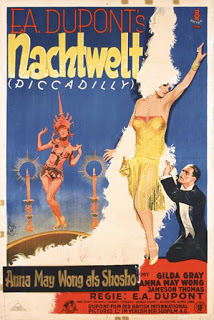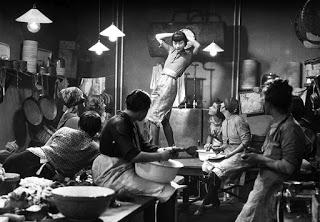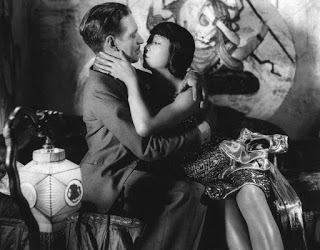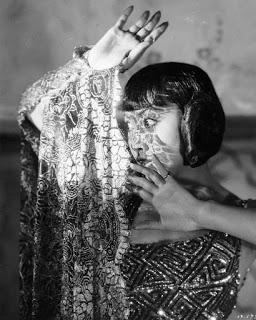Piccadilly
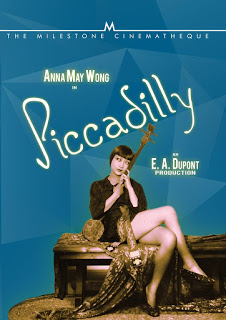
Director: Ewald Andre Dupont
Year: 1929
Rating: 8.0
Towards the end of the decade, Anna May Wong saw her career going nowhere
in Hollywood being stuck in minor often stereotyped roles and so when a German
producer asked her to cross the Atlantic and star in his film (Song) she
jumped at the opportunity. With that film and another one for the same producer
(Pavement Butterfly) she became a star on the Continent. She then went to
England to act in Piccadilly directed by expressionistic German director
Ewald Dupont. It is in many ways a remarkable film as it brings together
the friction and frisson of class, exoticism and race into a boiling pot.
It is a silent film right at the cusp of the onset of talking pictures and
the lack of speech and the dramatic use of expressions and emotions plays
right into Wong's acting strengths. She has numerous iconic scenes and moments
in the film with her costumes, dancing and stunning lingering facial shots.
When she is on the screen it burns, but when she isn't the film admittedly
slumps to a slow crawl.
The film begins in style with the neon of London flashing in the night and
the double-decker buses going by with the opening credits advertised on them.
The Piccadilly nightclub is open for business with its swanky deco décor,
the polished dance floor with couples moving in unison, gossip being traded
in the lady's salon like an exotic currency, servile waiters always on hand
and discreet assignations whispered intimately. The story begins with a dirty
dish that eventually brings tragedy to all. A customer (Charles Laughton
in a flash appearance early in his career) complains that his dish is dirty.
The owner Valentine (Jameson Thomas whose pencil thin moustache appeared
in a number of films in the 1930's usually as a dishonest cad) traces this
to the scullery where he sees a slender Chinese dishwasher on top of a table
performing a slinky dance for the amusement of her co-workers. He fires her.
The top attraction in his club is a professional dancing couple and the female
Mabel (the Polish actress Gilda Gray, who earlier in her dancing career invented
The Shimmy and the Voodoo Dance) is also Valentine's mistress. When business
begins to slow down Valentine recalls that Chinese dishwasher and asks Shosho
to dance at his club. She immediately sees opportunity and says she will
in an exotic Thai influenced costume of her choosing - already beginning
the dynamic of the female power play that she plays so well. She may be a
young girl but they grow up fast in Limehouse, a neighborhood full of roughs,
seedy bars, Chinese, sailors and women. She knows exactly what she wants
and this is shown subtlety - the closing of a door on her Chinese boyfriend
and the handing off her key to Valentine. He is basically sex struck and
enters her apartment as a fly into a parlor.
It is a wonderfully photographed film using close-ups to create beauty and
drama and the crowd scenes in the Piccadilly and later in a Limehouse bar
are kinetic as the camera swoons around capturing all forms of humanity and
the contrast between the rich and the poor. In the Limehouse bar a black
man is thrown out because he danced with a white woman and this is perhaps
a sign that crossing races is dangerous and forbidden and one that Shosho
ignores at her own peril.


